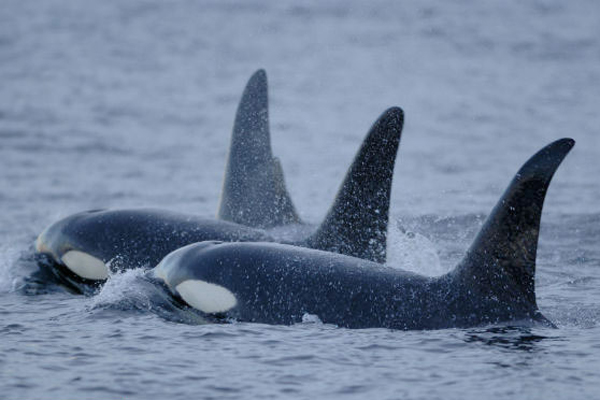Puget Sound Orcas To Remain on Endangered List

Three pods of killer whales, or orcas live off the west coast. You might have seen them, swimming in Puget Sound, British Columbia or the northern Pacific Ocean. They are the Southern Resident killer whales.
Until this week, these pods – tersely named J, K, and L – were caught up in a nerdy battle over taxonomy that threatened their listing under the Endangered Species Act.
The National Marine Fisheries Service (NMFS) said this week that the Southern Resident pods are culturally and genetically distinct from the orcas living elsewhere, and their small numbers justifies listing them under the Endangered Species Act. There are only 85 Southern Residents.
Animals Benefiting from Climate Change: Photos
Orcas are among the most diverse species out there. They eat distinct diets (some snack on sharks, while the Southern Resident pods feed predominantly on salmon), have languages unique to their pods, and may even have different coloration depending on where they live. They do not mix socially, and do not interbreed. There is culture among orcas, almost as strong as the ones that define human societies.
Three distinct types of orcas live in the northern Pacific Ocean. “Residents,” such as the Southern Resident killer whales, eat fish and live in matrilineal pods. “Transients” are a small group that feed on marine mammals. And the “offshore” killer whales live in the seas and feed primarily on sharks.
Despite the diversity, taxonomists have grouped all whales into a single species, Orcinus orca. Scientists have been debating whether the different types should be listed as multiple species, or perhaps as subspecies. If they are, certain populations that are in danger of dying out would qualify for drastic management actions.
Get the world’s most fascinating discoveries delivered straight to your inbox.
The NMFS listed the Southern Resident killer whales as endangered in 2005, and with that waded into the taxonomy debate by implying the group was distinct from all others.
The Pacific Legal Foundation, a conservative group, immediately protested the decision.
This week, the NMFS stood by its decision. The three pods of Southern Resident killer whales — J, K and L — live to different ages because of the type of food they eat and their interactions with their habitat. The differences in diet and behavior are dictated by culture, the agency said in a Federal Register notice.
Genetically speaking, the whales are different from the other types in the northern Pacific ocean, the agency said. That’s enough to suggest the orcas of Puget Sound are a unique group worthy of protection.
The Loneliest Whale in the World?: Analysis
As for the larger debate over the taxonomy of orcas, there’s some good news. In 2012, the Society of Marine Mammology recognized that the whales of the northern Pacific Ocean, which includes the Southern Resident killer whales, are a distinct subspecies. This is not formal decision, which needs to come from the International Commission on Zoological Nomenclature. But it is a step in that direction.
This story was provided by Discovery News.
 Live Science Plus
Live Science Plus





